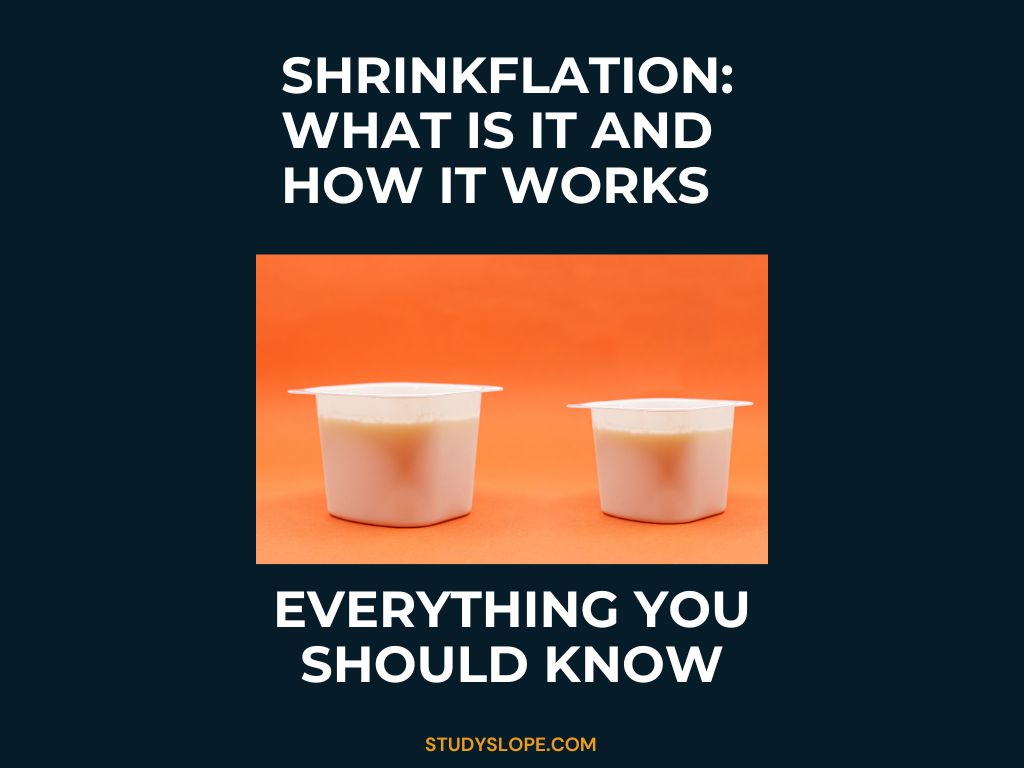Shrinkflation is a word that denotes a phenomena in which the size or quantity of a product is lowered while the price remains constant. Companies frequently use this approach to discreetly raise profit margins without increasing the apparent price to customers. Shrinkflation can affect a variety of consumer goods, including food, beverages, hygiene, and household items.
How Shrinkflation Works
Shrinkflation occurs when manufacturers gradually lower the amount of product in a packaging while maintaining the same price. This can be accomplished in a few ways:
Reducing Package Size: Reducing the volume or weight of the product inside the same package.
Changing the Packaging: Changing the form or design to conceal the reduced quantity.
Lowering the Quality: Using lower-cost chemicals or materials while keeping the product’s look.
For example, if a candy bar’s weight is reduced from 100 grams to 90 grams, the price remains unchanged. The consumer spends the same, but receives less product.
Reasons behind Shrinkflation
Several factors encourage businesses to use shrinkflation, including:
Rising Production Costs: Increases in raw materials, labor, or transportation can force firms to discover ways to stay profitable without raising retail costs.
Market Competition: In highly competitive marketplaces, rising prices may result in customers switching to competitors with cheaper prices.
Inflation: General price inflation can erode purchasing power, prompting businesses to gradually cut product sizes to compensate for increased operational expenses.
Effects of Shrinkflation
Shrinkflation affects customers and the market in a variety of ways.
Consumer Perception: If customers learn they are getting less product for the same price, they may feel tricked, which might harm brand loyalty.
Value for Money: It diminishes the value that consumers get for their money, resulting in a disguised price increase.
Purchasing Behavior: Being aware of shrinkflation might lead to more careful and informed purchasing decisions, as customers strive to get the most bang for their buck.
Common Products Affected By Shrinkflation
Shrinkflation frequently affects daily consumer goods, because changes in size or quantity may go unnoticed.
Food Products: Snacks, cereals, canned foods, and beverages frequently receive volume or weight reductions.
Household Items: Paper towels, toilet paper, and cleaning supplies may be packaged in fewer sheets or in smaller bottles.
Personal Care: Products such as toothpaste, soap, and shampoo can be reduced in size while remaining the same price.
How to Identify Shrinkflation.
Being cautious and aware can help customers identify shrinkflation:
Check unit prices: Consider the cost per unit (e.g., per ounce or gram) rather than the total price.
Compare the old and new packages: Pay attention to packaging changes and compare them to prior versions.
Read Labels: Examine product labels to see how the net weight or volume has changed over time.
FAQs:
Why don’t firms simply increase pricing instead of decreasing product size?
Companies frequently worry that raising prices directly may alienate customers or make their items less competitive compared to others on the market. Shrinkflation is a less obvious approach to save costs.
Is shrinkflation legal?
Yes, as long as the packaging appropriately represents the quantity of the product. However, ethical issues arise when businesses employ misleading strategies to conceal the reduction.
Can shrinkflation be reversed?
While it is rare, some corporations may increase the size of their products again if economic conditions improve or if they suffer public reaction.
How can customers protect themselves against shrinkflation?
Consumers may keep informed, check unit costs, and compare items from other companies to ensure they are getting the greatest deal.
Is shrinkflation affecting all industries equally?
No, it is more typical in the consumer products industry, where container size and content can be quickly changed without causing significant consumer backlash.

